Spotlight
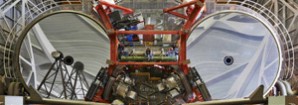
LBT's Multi-Institution LEECH Survey Pays Dividends
Taking advantage of the unprecedented sensitivity of the Large Binocular Telescope in southeastern Arizona, an international team of astronomers has obtained the first results from the LEECH exoplanet imaging survey. The findings reveal new insights into the architecture and dynamics of HR8799, a "scaled-up" version of our solar system 130 light-years from Earth.
LEECH is led by Andrew Skemer, a Hubble Fellow at the UA/Steward, and uses the Large Binocular Telescope Interferometer, which was built at the University of Arizona by Professor Philip Hinz. By directly imaging extrasolar planets, LEECH will be able to characterize the atmospheres of gas-giant planets to determine their compositions, cloud structures and weather patterns. LEECH will also discover new planetary systems by being able to see planets that are closer to their host stars than previous surveys. LEECH will also search for new planetary systems around 200 stars by being able to see planets that are closer to their host stars than previous surveys could.
The press release can be found HERE and the AZ Star article can be found HERE
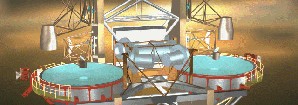
UA Awarded a NASA "Nexus for Exoplanet System Science" (NExSS) Five-year Study
A multi-insitutional and multi-disciplinary team of astronomers, planetary scientists, chemists, and materials scientists has been selected by NASA for a 5-year-long 5.7 million dollar award to study how earth-like planets form and how they accrete the ingredients required for life. The team is led by Steward and LPL assistant professor Daniel Apai and will be part of NASA bold new program Nexus for Exoplanet System Science (NExSS). The UA-led team represents a large-scale and highly interdisciplinary effort and includes researchers from the National Optical Astronomical Observatory, the University of Chicago, Arizona State University, and the Planetary Science Institute. The group will combine astronomical observations and laboratory measurements with a new generation of planet formation simulation to model the origins of potentially life-bearing planets to help interpret exoplanet observations and to giude the development of NASA missions aiming to find life in planets around nearby stars.
The press release can be found HERE. You can find the Arizona Daily Star article HERE.
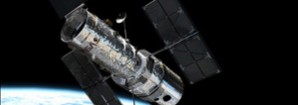
Happy 25 Years in Space, Hubble Space Telescope
The Hubble Space Telescope was launched from Cape Canaveral on April 24, 1990. It was carried to orbit with STS-31, Discovery Space Shuttle. A UA instrument, NICMOS, with UA's Rodger Thompson as P.I.,was inserted into HST during Servicing Mission 2, in early 1997. The success of Hubble led the way to the upcoming 2018 launch of JWST, another mission with a major UA presence (and HERE and HERE, too). The 25th anniversary is noted in this UANews press release and in this photo gallery in the Arizona Daily Star. The NASA press and image release can be found HERE. A NY Times photo set is found HERE, with an article HERE. Finally, an Apr 24 AzStar article is HERE. and to keep it going, here's a Sky&Telescope article that's a bit different from the rest.
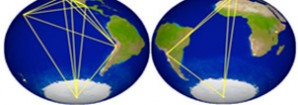
Earth-Sized Telescope Expands to the South Pole to See Black Holes in Detail
TUCSON, Arizona – Astronomers building an Earth-size virtual telescope capable of photographing the event horizon of the black hole at the center of our Milky Way have extended their instrument to the bottom of the Earth — the South Pole — thanks to recent efforts by a team led by Dan Marrone of the University of Arizona.
[The four paragraphs quoted here are from a UA Press release written by Daniel Stolte. The link to the complete story can be found below.]
Marrone, an assistant professor in the UA's Department of Astronomy and Steward Observatory, and several colleagues flew to the National Science Foundation’s Amundsen-Scott South Pole Station in December to bring the South Pole Telescope, or SPT, into the largest virtual telescope ever built — the Event Horizon Telescope, or EHT. By combining telescopes across the Earth, the EHT will take the first detailed pictures of black holes.
The EHT is an array of radio telescopes connected using a technique known as Very Long Baseline Interferometry, or VLBI. Larger telescopes can make sharper observations, and interferometry allows multiple telescopes to act like a single telescope as large as the separation — or "baseline" — between them.
"Now that we’ve done VLBI with the SPT, the Event Horizon Telescope really does span the whole Earth, from the Submillimeter Telescope on Mount Graham in Arizona, to California, Hawaii, Chile, Mexico, Spain and the South Pole," Marrone said. "The baselines to SPT give us two to three times more resolution than our past arrays, which is absolutely crucial to the goals of the EHT. To verify the existence of an event horizon, the 'edge' of a black hole, and more generally to test Einstein's theory of general relativity, we need a very detailed picture of a black hole. With the full EHT, we should be able to do this."
This story and images are online at http://uanews.org/story/virtual-telescope-expands-to-see-black-holes.
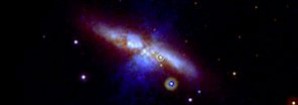
UV Insights Into Two Classes of Type Ia Supernovae
[Note added April 19: Tom Beal of the Arizona Daily Star has written a nice article HERE with extensive quotations from Nick Suntzeff of Texas A&M, and others.]
Peter Milne of Steward Observatory, Gautham Narayan of NOAO and UA, and collaborators Ryan Foley and Peter Brown have discovered two types of nearby Type Ia supernovae. These sub-classes of Ia supernova mostly differ in their UV-light output. They are called UV-red and UB-blue: the UV-red objects dominate locally. At high redshift, the UV-blue objects dominate. The optical colors also subtly change, leading to a possible misinterpretation, using the regular analysis, of the reddening and distance to the supernova. This change of type of supernova with the age of the Universe at time of explosion has implications for the fundamental parameters of cosmology, since the identical objects are not being compared as astronomers look farther away into the Universe. There is a distance error as a function of redshift, which will change the derivation of the cosmological parameters. While the observational underpinnings of the need for dark energy will not disappear, the precise values of the cosmological parameters, including the amount of dark energy, will change, probably at a low level. Theoretical models of supernovae will need to explain these observations.
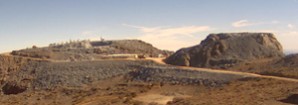
Laying of the First Stone for LSST
Suzanne Jacoby of LSST announces: "April 14, 2015 - LSST marks a major milestone today, with the traditional First Stone (Primera Piedra) ceremony taking place this afternoon on Cerro Pachón, Chile. While site leveling has already begun, laying of the first stone is a Chilean tradition marking the construction start for a new astronomical observatory. Chilean President Michelle Bachelet, U.S. Ambassador to Chile Michael A. Hammer, NSF Director France Córdova, and Charles Simonyi are among the dignitaries present to mark this start of summit construction. After a pause for today's festivities, the summit returns to being an active construction site under the direction of the LSST summit facility general contractor, Besalco. You can watch construction progress through our webcams, available at http://www.lsst.org/lsst/gallery/construction-webcam.
Suzanne Jacoby, for the LSST Project Office"
Photo Credit: LSST Construction Webcam
Pages

For Public
Public events include our Monday Night Lecture Series, world-reknowned Astronomy Camp and Mt Lemmon Sky Center.

For Students
A good place to start if you want to become an undergrad major or grad student, or need to find our schedule of classes.

For Scientists
Find telescopes and instruments, telescope time applications, staff and mountain contacts, and faculty and staff scientific interests.




